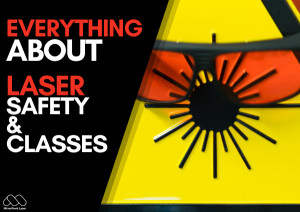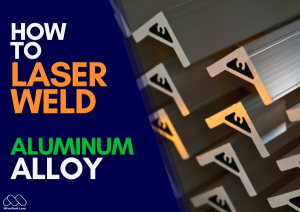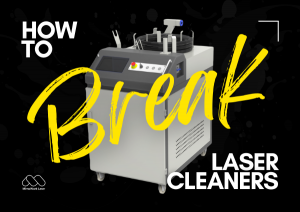Why Laser Engraving Doesn't Work on Stainless Steel
If you're looking to laser mark stainless steel, you may have come across advice suggesting you can laser engrave it.
However, there's an important distinction you need to understand:
Stainless steel cannot be effectively laser engraved.
Here's why.
Don't Laser Engrave Stainless Steel
Engraved Stainless Steel = Corrosion
Laser engraving involves removing material from the surface to create markings.
And this process can lead to significant issues when used on stainless steel.
Stainless steel has a protective layer called chromium oxide.
Which forms naturally when chromium in the steel reacts with oxygen.
This layer serves as a barrier that prevents rust and corrosion by stopping oxygen from reaching the underlying metal.
When you attempt to laser engrave stainless steel, the laser burns away or disrupts this critical layer.
This removal exposes the underlying steel to oxygen, triggering a chemical reaction called oxidation.
Which leads to rust and corrosion.
Over time, this weakens the material and compromises its durability.
Want to Know More about the Differences Between
Laser Engraving & Laser Annealing?
What is Laser Annealing
The Correct Method for "Engraving" Stainless Steel
Laser annealing works by heating the stainless steel surface to a high temperature without removing any material.
The laser briefly heats the metal to a temperature where the chromium oxide layer doesn’t melt.
But oxygen is able to interact with the metal just beneath the surface.
This controlled oxidation alters the color of the surface, resulting in a permanent mark.
Usually black but potentially in a range of colors depending on the settings.
The key advantage of laser annealing is that it doesn’t damage the protective chromium oxide layer.
This ensures the metal remains resistant to rust and corrosion, preserving the integrity of the stainless steel.
Laser Engraving Vs. Laser Annealing
Seems Similar - But Very Different Laser Processes
It’s common for people to confuse laser etching and laser annealing when it comes to stainless steel.
While both involve using a laser to mark the surface, they work very differently and have distinct results.
Laser Etching & Laser Engraving
Laser etching typically involves removing material, just like engraving, which leads to the problems mentioned earlier (corrosion and rusting).
Laser Annealing
Laser annealing, on the other hand, is the correct method for creating permanent, corrosion-free markings on stainless steel.
What’s the Difference - For Processing Stainless Steel
Laser annealing works by heating the stainless steel surface to a high temperature without removing any material.
The laser briefly heats the metal to a temperature where the chromium oxide layer doesn’t melt.
But oxygen is able to interact with the metal just beneath the surface.
This controlled oxidation alters the color of the surface.
Resulting in a permanent mark, usually black but potentially in a range of colors depending on the settings.
Key Difference of Laser Annealing
The key advantage of laser annealing is that it doesn’t damage the protective chromium oxide layer.
This ensures the metal remains resistant to rust and corrosion, preserving the integrity of the stainless steel.
Why You Should Choose Laser Annealing for Stainless Steel
Laser annealing is the preferred technique when you need permanent, high-quality marks on stainless steel.
Whether you're adding a logo, serial number, or data matrix code, laser annealing provides several benefits:
Permanent Marks:
The marks are etched into the surface without damaging the material, ensuring they last for the long term.
High Contrast and Detail:
Laser annealing produces sharp, clear, and highly detailed markings that are easy to read.
No Cracks or Bumps:
Unlike engraving or etching, annealing doesn’t cause surface damage, so the finish remains smooth and intact.
Color Variety:
Depending on the technique and settings, you can achieve a range of colors, from black to gold, blue, and more.
No Material Removal:
Since the process only modifies the surface without removing material, the protective layer remains intact, preventing rust and corrosion.
No Consumables or Low Maintenance:
Unlike other marking methods, laser annealing requires no additional consumables like inks or chemicals, and the laser machines have low maintenance needs.
Want to Know Which Method is Best Suited to Your Business?
Related Application & Article
Find Out More from Our Hand Picked Articles
Post time: Dec-24-2024




